Barberry Ottawa "Superba": description, planting and care
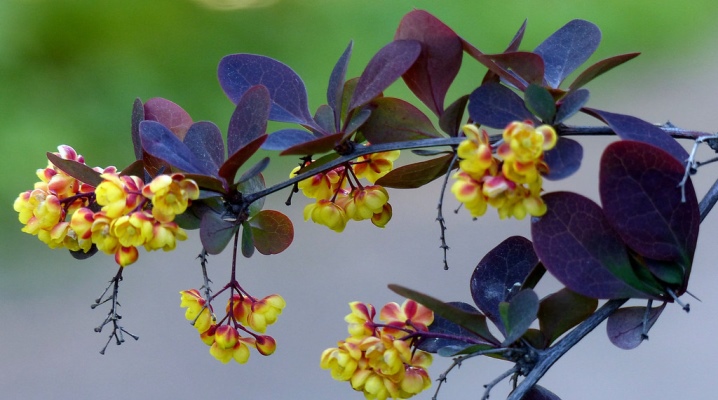
There are many recommendations on which plants to use to give the site an extraordinary look. But many of the cultures are difficult to use or are extremely capricious to growing conditions. A happy exception is the barberry, which will be discussed in this material.
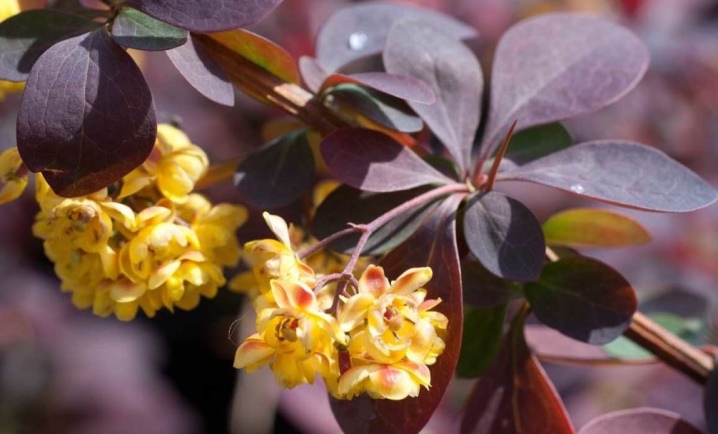
Peculiarities
At one time, the Ottawa barberry "Superba" received an award from the English Society of Gardeners, and in Britain they definitely know a lot about green gardening. The variety is one of the large deciduous shrubs. Its width and height can increase with time up to 3 or even up to 4 m. Growth is fast, and the maximum values are reached by 8-10 years. In the early years, the branches rush straight up. But gradually they begin to grow in a drooping arc. In the description of Berberis ottawensis Superba, a red-brown color of the bark is also noted. Over the entire surface, it is covered with thorns, reaching a length of 0.02 m. The leaves of the bush are characterized by rounded or obovate contours.
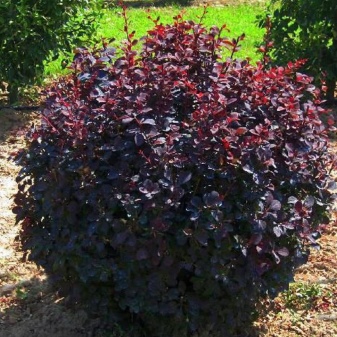

On average, the size of the leaf is 0.03-0.05 m in length. Its color is brilliant; dark red or purple foliage retains its spectacular appearance throughout the growing season. Even growing in the shade does not affect this. During the fall, the bush acquires a pale reddish or orange color. The Canadian barberry will bloom in May. The flowers of the plant are characterized by a yellow-red color. They are grouped in racemose inflorescences. On average, there are 9-10 flowers per inflorescence. They differ in a sweetish, but at the same time unobtrusive aroma.
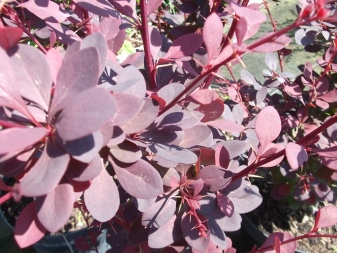
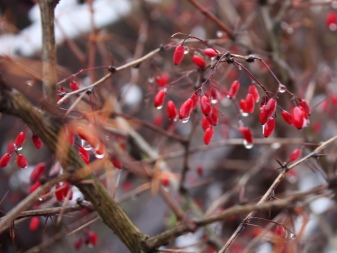
At the end of autumn, after the passage of early frosts, the barberry fruits lose their characteristic bitter and sour notes, therefore it is undesirable to rush with the collection. The fruits of the barberry are colored in a juicy scarlet color. They are characterized by an oblong configuration; the length is 0.8-1 cm. The fruits can hang on the branches for a long time. At the same time, regardless of the weather, they retain a dense structure.
How to plant?
The process of planting barberry is not difficult for any trained gardeners. The best time to do this is in the spring or early fall. If spring time is chosen, you will have to make sure that the buds on the seedling do not have time to bloom. At the same time, you should not be afraid of missing any deadlines - it is enough for the earth to warm up to 15 degrees. In the autumn time, they choose the moment when about 20-27 days remain before the traditional onset of frost.
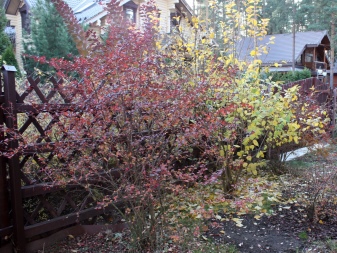

All other things being equal, an autumn landing is even preferable. Important: the choice of a place for barberry should be given special attention. It is better if it is a completely open or slightly shaded area. The ground needs to be warm and sheltered from strong winds. The acidity of the soil is critical. All areas with a pH value above 7 must be lime. Otherwise, you cannot count on success. To compose the planting mixture, equal volumes and quantities are used:
- sod soil;
- humus;
- ashes of deciduous crops;
- peat.

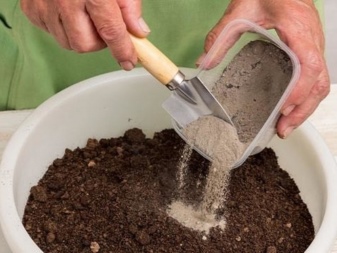

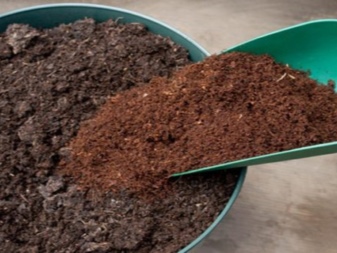
After mixing the fertilizers with the soil, the whole mixture is poured with plenty of water. To plant a medium-sized barberry bush, you need to prepare a planting hole of 0.4x0.4 m.When several bushes are planted at once, a gap of at least 1.5 m should be left between them.It is better if this gap is from 2 m. The neck of the root is placed at the level of the soil. The roots themselves should be covered with fertile soil. You cannot leave voids, but bending the roots is highly discouraged. When they plan to form a hedge, then 2 bushes are planted per 1 running meter. Otherwise, you will have to engage in additional landing or abandon your plan.
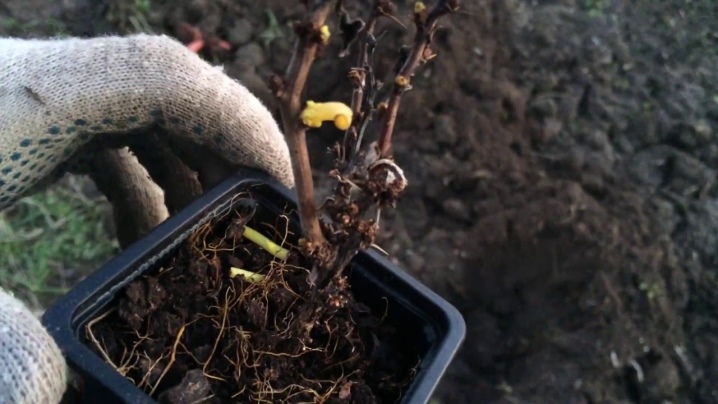
How to take care of it properly?
Consider the main points of proper care for barberry.
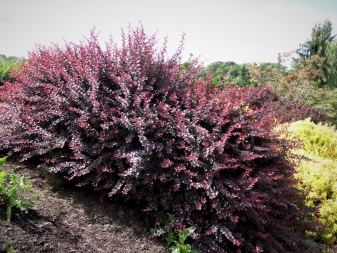

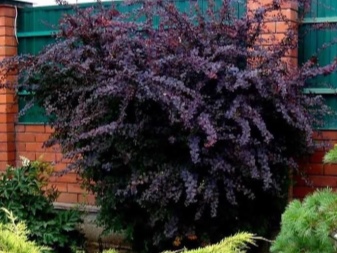
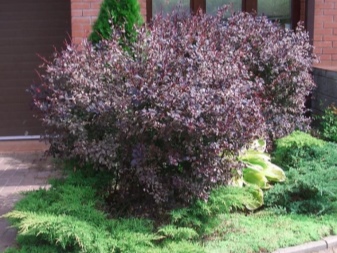
Watering
Full care for barberry involves irrigating the plant once a week. On average, 5 to 10 liters of water are consumed per bush, given the dryness of the soil. Immediately after watering, the disturbed mulching layer is corrected, if necessary, it is renewed. Before wintering, watering with moisture is carried out when 14-20 days remain before frost. You will need to pour 20 liters of water per plant.
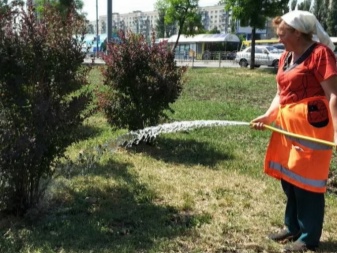
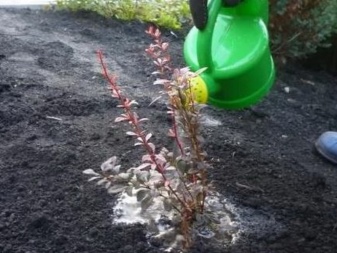
Top dressing
If planting is done correctly and well-fertilized soil is used, additional fertilizing will not be required until the next growing season. Usually, the first feeding is carried out in the spring, using urea diluted in water. For 1 sq. m. of the near-trunk area, 10 liters of fertilizer are consumed. Gardeners who refuse such a simple measure will soon find that the barberry grows poorly and the shoots themselves do not look very good. Subsequent nitrogen additions are made a maximum of every 4 years.

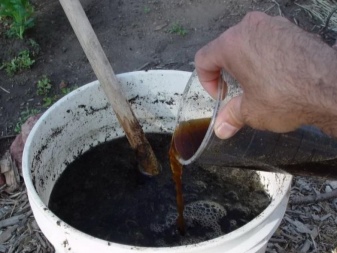
In autumn, barberries are fed with the expectation of adapting to winter. At this point, a mixture of 0.015 kg of superphosphate and 0.01 kg of potassium sulphide is used. Before flowering and after its end, the bush is fed with organic substances. Both manure and humus will come in handy. There are no other requirements for feeding.
Pruning
An annual haircut, although not sanitary, helps to preserve the beauty of the barberry. Thanks to it, the formation of relatively young shoots is accelerated. And already on these shoots, the leaves look more attractive. A side effect is also noted, and it is especially important if the plant has recently experienced severe stress. Sanitary pruning, if the bush is very thickened, should be carried out in the fall, when about 2 weeks remain before severe cold weather. At this point, the bush goes into hibernation and tolerates the procedure without problems. Specific dates are determined by climate and actual weather. Therefore, in general, we can only say about the "fork" from September to November. During the trimming process, the following should be removed:
- too old branches;
- dry shoots;
- all places affected by diseases and pests;
- densely intertwined and interfering shoots;
- all branches directed deep into the crown.
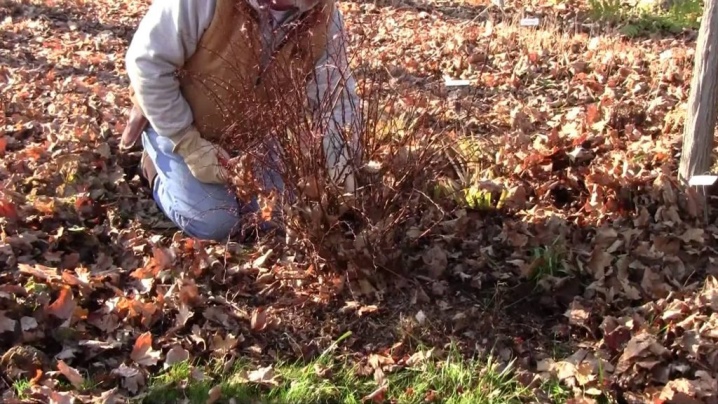
For work, only well-sharpened scissors are used. Each large cut is treated with garden pitch. Any cut off part must be disposed of. Those parts that have suffered from diseases or pests are necessarily burned.
Particularly noteworthy is the procedure for pruning barberries, from which they want to make a hedge:
- you should start immediately after flowering the bush;
- in the second year after planting, all plants are shortened by 1/2 or 1/3 (depending on need);
- the haircut is carried out according to one principle common to all bushes, waiting for the neighboring crowns to close;
- when the result is achieved, they are limited to trimming the lateral and upper growth.
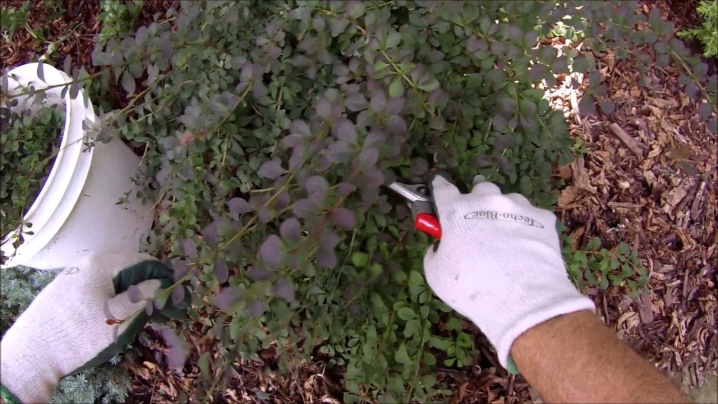
Preparing for winter
Shelter of barberry bushes for the winter is required. This procedure is especially relevant in the first 3-4 years. But not everyone knows how to act correctly. The technique is not too complicated:
- add mulch so that its layer rises to 0.1 m;
- they tie up the shoots with ropes (be careful - any strong pressure can break them);
- then the bush is completely covered with a cap (old bags, agrospan, and other modern materials will do);
- around the perimeter, the shelter is covered with spruce paws;
- with the arrival of winter, they try to warm up more snow to the bush.
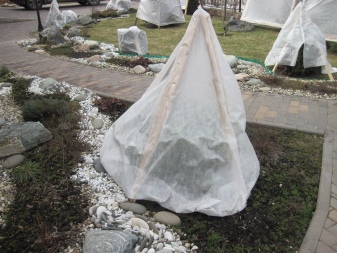
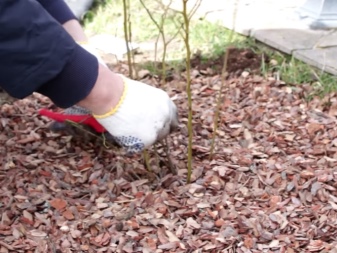
Reproduction methods
To propagate barberry, cuttings can be used. But they are extremely slow to form roots. Dividing the bush into parts is more promising. However, the roots are quite sensitive. There is a great risk of damaging the delicate root system. Seed germination, even under ideal conditions, does not exceed 40-45%. Moreover, even if they sprout, valuable original properties are not always preserved. Cutting is bad because it does not allow the release of rhizomes. These subtleties are not fatal in breeding. You just need to take them into account, and then the problems can be bypassed.
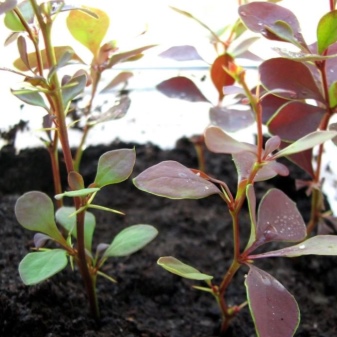

Diseases and pests
Ottawa barberry saturates the air with a significant amount of phytoncides. Therefore, he himself is naturally resistant to many dangerous factors. However, the risk of infection or aggression by pests still exists. In most cases, plants are affected by aphids and moths. These insect species lay eggs in the fall. This clutch hibernates calmly almost always. The larvae and caterpillars of the moths destroy the foliage and deprive the barberry of its external appeal. Washing the plants helps to cope with mild infestation. But it is impractical to use one soap solution for this purpose. The most effective mixture is prepared like this:
- dilute 0.4 kg of wood ash in 5 liters of water;
- the resulting solution is boiled for 30 to 40 minutes;
- filter the liquid;
- diluted with water to a volume of 10 liters;
- add 0.05 kg of laundry soap.
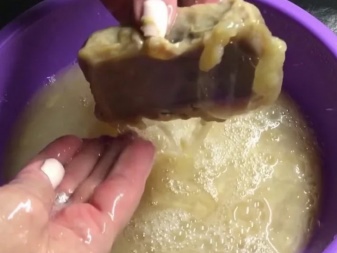
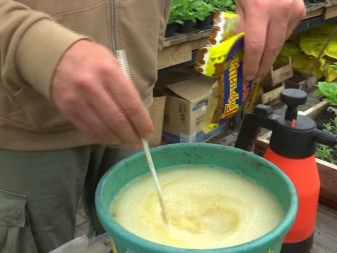
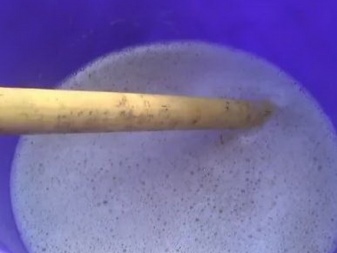
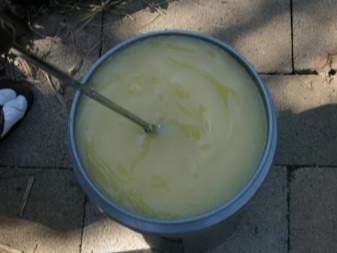
In case of significant infection, you will have to use branded insecticides. Usually drugs "Actellik", "Bankol", "Confidor" or the more traditional karbofos are used. Important: you should read the instructions in advance and do not deviate from it, even in small things. Whatever plant protection products are used, you need to wear a respirator, gloves and take care of wearing tight clothing that covers the whole body.
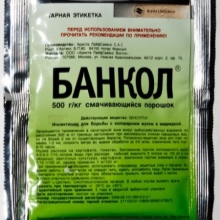
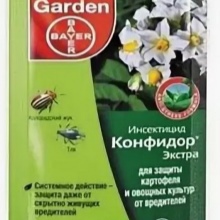

Prevention of infestations requires the use of fungicides. They are applied in the fall. For every 10 liters of water, 0.5 kg of urea is laid. Important: it is necessary to spray with such a solution not one barberry, but all the shrubs. This is the only way to avoid the emergence and spread of various ailments. Barberries often suffer from fungal infections. Among them, rust and powdery mildew are especially harmful. The last disease is fought with the help of "Topaz", "Vectra", "Fundazol". Usually 4-6 treatments are enough. In especially severe cases, diseased plants are disposed of completely.
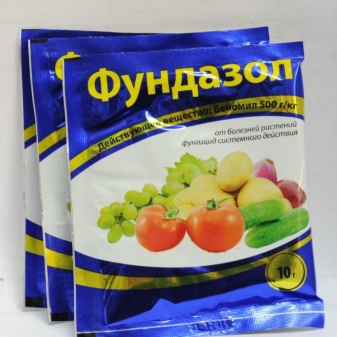
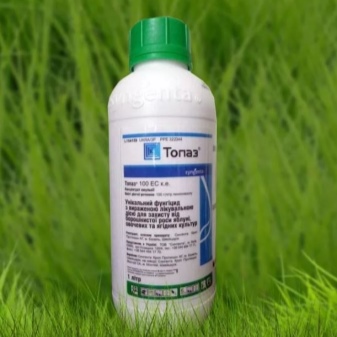
Use in landscape design
Barberry "Superba" can decorate even relatively modest areas. It is advised to plant it in the most illuminated places. Then the plant will look brighter and more expressive. It is possible to use the culture in both single and group plantings. It is planted near curbs and on alpine slides, as well as in the format of decorative hedges and in the design of house plots.

For information on how to properly care for the Ottawa barberry "Superba", see the next video.
































































The comment was sent successfully.